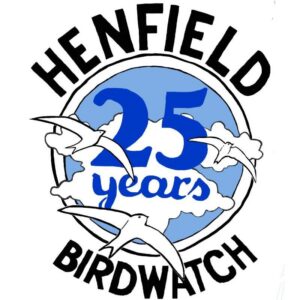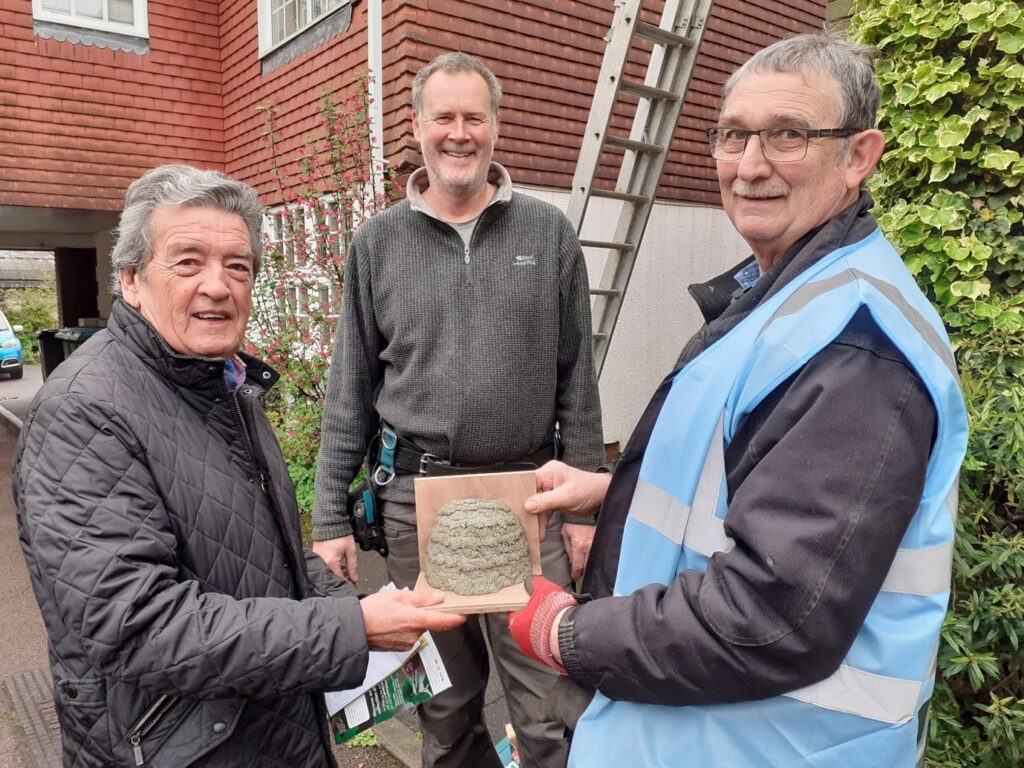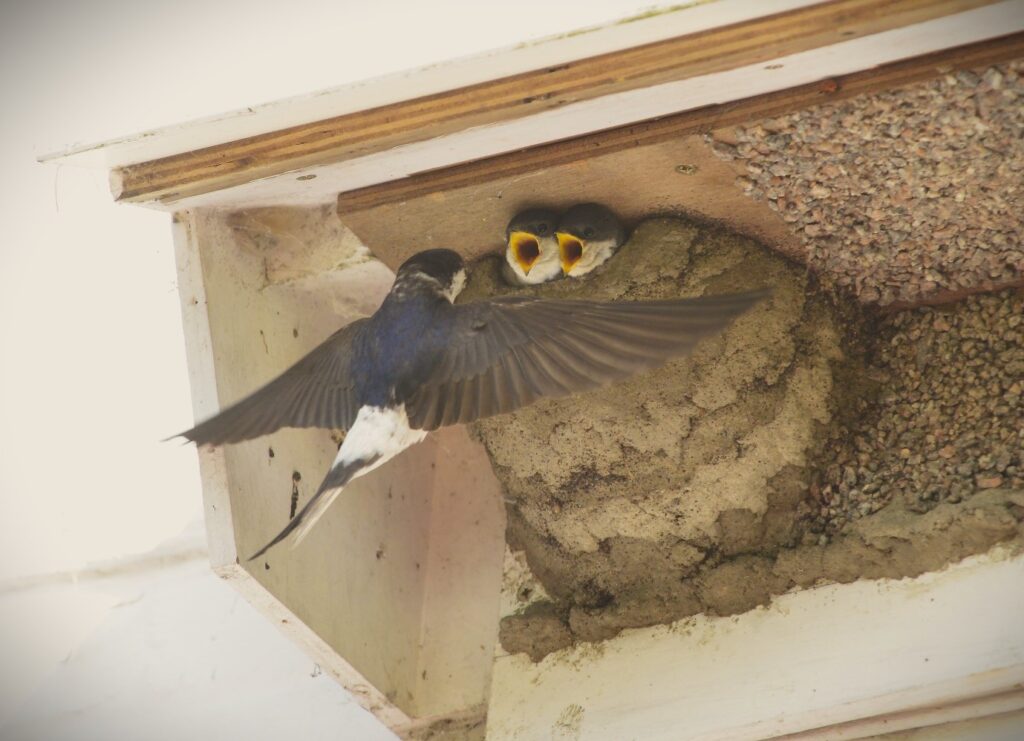The first Swift of this year was seen on the last day of April and the dry, hot summer was ideal for breeding Swifts.
Good weather means that there are plenty of insects and this will affect their breeding success in 3 ways: the adults are healthier and may lay up to 3 eggs rather than the normal 2, the adults are able to feed themselves and the chicks without having to spend extended periods away from the nest searching for food and a plentiful supply of food to the chicks means that they are healthier and stronger and the nest may support more than the normal 1 or 2 chicks.
A new box was installed at the Saelig colony in April and in May Swifts were already using it (more on this later), the other 5 boxes were also active. One evening Tony was lucky enough to witness about ten non-breeding birds loudly banging at all the boxes seeking out possible nesting spaces for future use. Hopefully, they will be back next year and beyond.
The Chestnut End box was active and a lot of interest was shown in the other 3 boxes with non-breeding Swifts poking their heads in to the boxes and entering them occasionally.
Unfortunately the number of active nests behind Henfield Club reduced from 4 to 2, probably due to fatalities during migration. On the plus side 2 of the boxes on Stokes were active – last year none of the boxes were used.
The Broomfield Road box was active again as were all 3 sites in Upper Station Road. The number of active boxes in Faircox Lane increased from 1 to 2.
A site in West End Lane appeared to be active but this could not be confirmed.
This year we had 17 active nests which produced between 19 and 34 fledglings, our best results since we started the project back in 2017.
Now back to the box installed this year at the Saelig colony. On July 6th Justine found 2 Swiftlets on the ground beneath the box, one was very tiny. Justine took them to Alison in Warnham who rescues Swifts, House Martins and Swallows. Unfortunately the tiny Swift’s wings didn’t form properly and it died, however the other Swift flourished and was released in early August. Have a look at the photo below of the 2 birds to see the difference in size. Generally Swifts lay eggs with just a couple of days between them; it’s obvious that the 2nd swift was severely malnourished. It is more than likely that the Swifts that used this new box were 1st time breeders and the inexperienced parents didn’t feed them enough or may even have abandoned the nest. The Swiftlets jumped from the box because they were hungry. Let’s hope the adults have their act together next year.
Debbie and Tony





